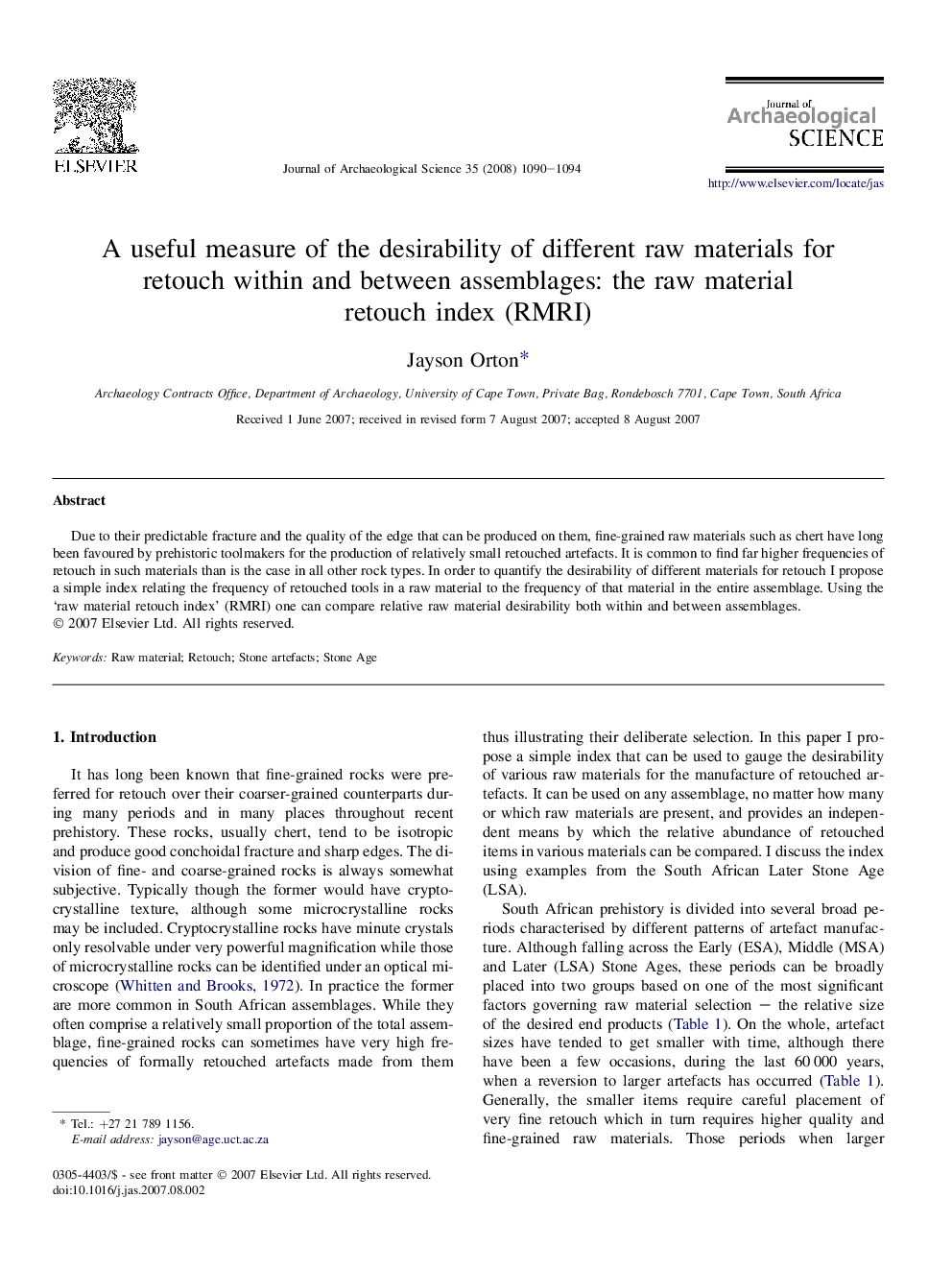| Article ID | Journal | Published Year | Pages | File Type |
|---|---|---|---|---|
| 1037464 | Journal of Archaeological Science | 2008 | 5 Pages |
Abstract
Due to their predictable fracture and the quality of the edge that can be produced on them, fine-grained raw materials such as chert have long been favoured by prehistoric toolmakers for the production of relatively small retouched artefacts. It is common to find far higher frequencies of retouch in such materials than is the case in all other rock types. In order to quantify the desirability of different materials for retouch I propose a simple index relating the frequency of retouched tools in a raw material to the frequency of that material in the entire assemblage. Using the ‘raw material retouch index’ (RMRI) one can compare relative raw material desirability both within and between assemblages.
Keywords
Related Topics
Physical Sciences and Engineering
Materials Science
Materials Science (General)
Authors
Jayson Orton,
